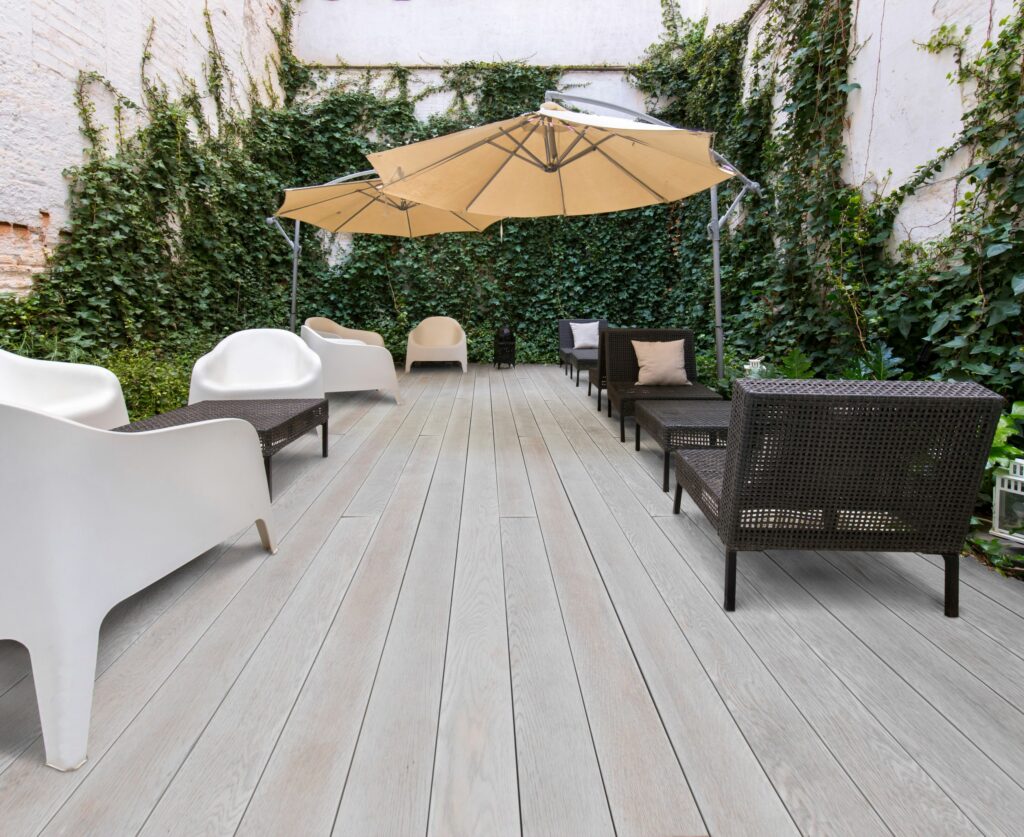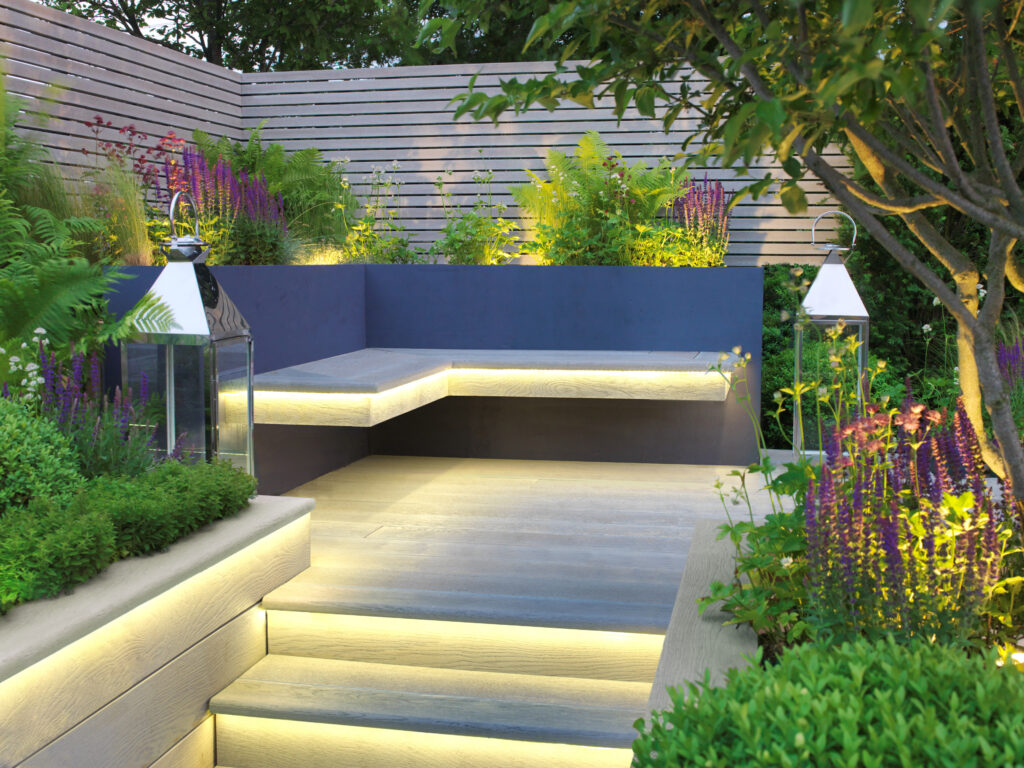
As you are undoubtedly aware, the hunger for outdoor decking rages on. It exploded onto the hard-landscaping scene when Groundforce was on, and decking remains a top choice for many people with gardens. But there are definite disadvantages that come with decking – think algae, slippery surfaces, that ugly chicken-wire remedy and the constant need to clean and treat the surface.
Millboard composite decking has a niche in the market because it remedies those problems and looks just as good as the real thing. In fact, many people prefer its appearance, so what value is there in opting for timber?
Here’s why Millboard decking IS worth the money.
The Science
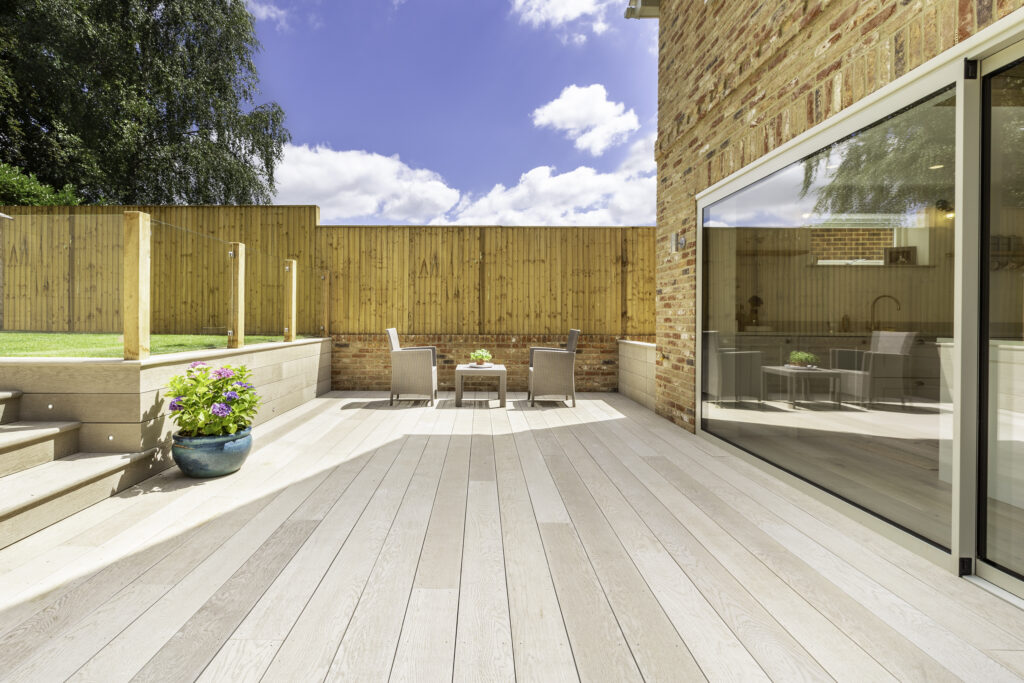
The power of Millboard is in its unique polyurethane resin composition. It also has a non-porous, anti-fungal Lastane® finish, which is a similar principle to the non-slip soles of your high-street shoes. The result is improved grip and greater resistance to the signs of weathering, as well as resistance to stains and other types of damage. But what makes Millboard stand out from the other wood composite boards out there?
Well, wood-plastic composite boards were designed to make it easier to paint the decking (this is popular in the States). They still suffer from the same issues with algae, meaning colours fade and the surface becomes slippery. Millboard, on the other hand, was specifically designed to solve those frustrating problems with decking, particularly in light of the unpredictability of Britain’s weather. After years of research and refinement, the product you see today has an excellent anti-slip rating, and it doesn’t need to be painted or treated in any way – it looks great and performs perfectly as soon as you install it.
Making it a reality
The cherry on top of every good garden design is attention to the details. This is the difference between something good and something great; the differences are subtle and may not even be noticeable at a glance, but it is those differences that separate the wheat from the chaff in garden design.
The creation of Millboard decking boards is aimed at preserving some kind of authenticity in the appearance. Composite boards are moulded, rather than extruded, meaning the grain looks as natural as possible. The boards are then finished by hand to make the details of those fine grains really stand out. Finally, they are hand-coloured to capture the nuances of natural wood, so there is very little visual difference between real timber and composite Millboard boards.
You can rest assured that every Millboard range has been moulded from real boards. They will have been handpicked by an experienced expert who knows how to identify real character in the knots and grain of a piece of timber. In fact, the manufacturers often go to great lengths to create that character, moulding from antique boards that came from old buildings in exotic parts of the world like rural France. It would be great to have a conversation with the person that managed to convince the owner of these antiquated boards to pull one up from their floor and allow a brand to borrow it just for moulding!
The authenticity is further advanced by the use of moulds taken from numerous boards to create different patterns in the grains. This, along with the careful hand colouring, ensures you won’t see any two boards that look exactly the same. Millboard has become the decking of choice for many tasteful installers and homeowners, and it isn’t hard to see why when you consider the work that goes into crafting those finer details.
You will see Millboard in action at prestigious events like the Chelsea Flower Show, where designers create decking around carriages and pavilions to get the most aesthetically-pleasing looks for their installation.
So, in summary, what is the advantage of Millboard composite decking over timber?
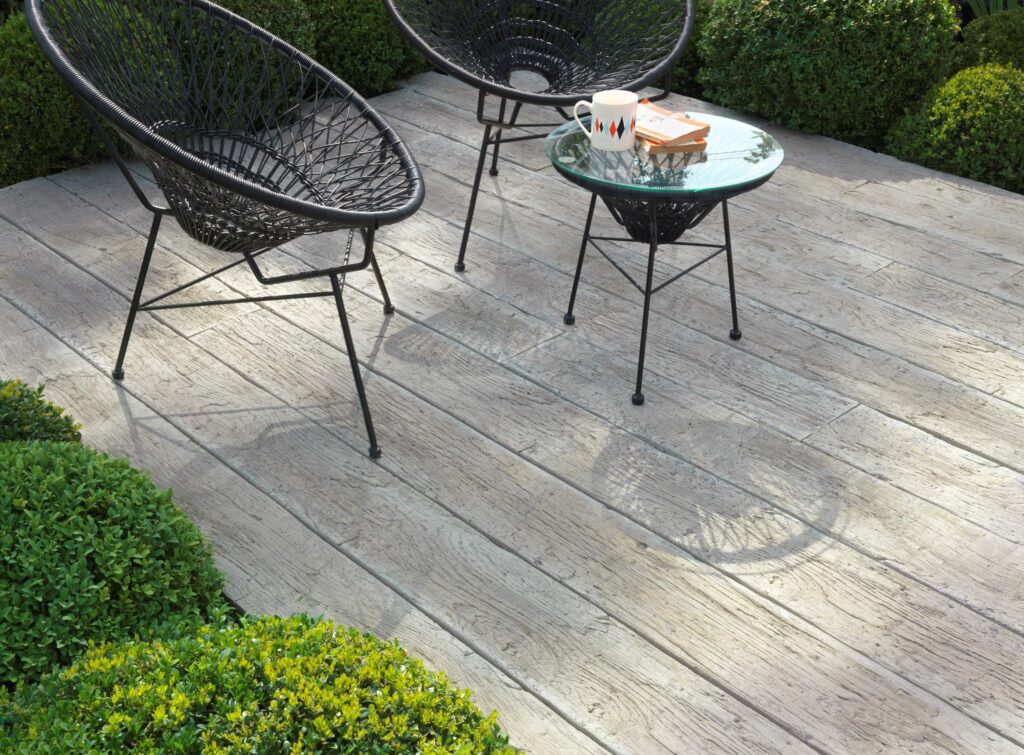
Wood looks great, but for decking that is about as far as its advantages go. Real wood warps, splits and rots, and the treatments aimed at mitigating these things are expensive and not great for the environment. Surely people want decking so that they can relax on it; not to be constantly working and carrying out maintenance on it?
Talking of relaxing (and having fun), people certainly like to have food and drink wine on their decking. But spilt red wine or dropped oily foods can leave a permanent stain on timber, while that non-porous Lastane® coating on Millboard enables the user to simply wipe clean whenever there is a spillage. The other benefit of that surface is the grip it provides, even when wet. Algae cannot latch onto it, and it is specially developed to be non-slip, ensuring homeowners and their mates remain safe.
All this, and it really captures the look of the real thing thanks to the painstaking effort the manufacturers go to. It’s like having a timber decking made up of all the choice cuts of the most elegant wood recovered from antiquity. It looks like the genuine article, only better because it is based on the best elements of the genuine article!
Is it worth the money?
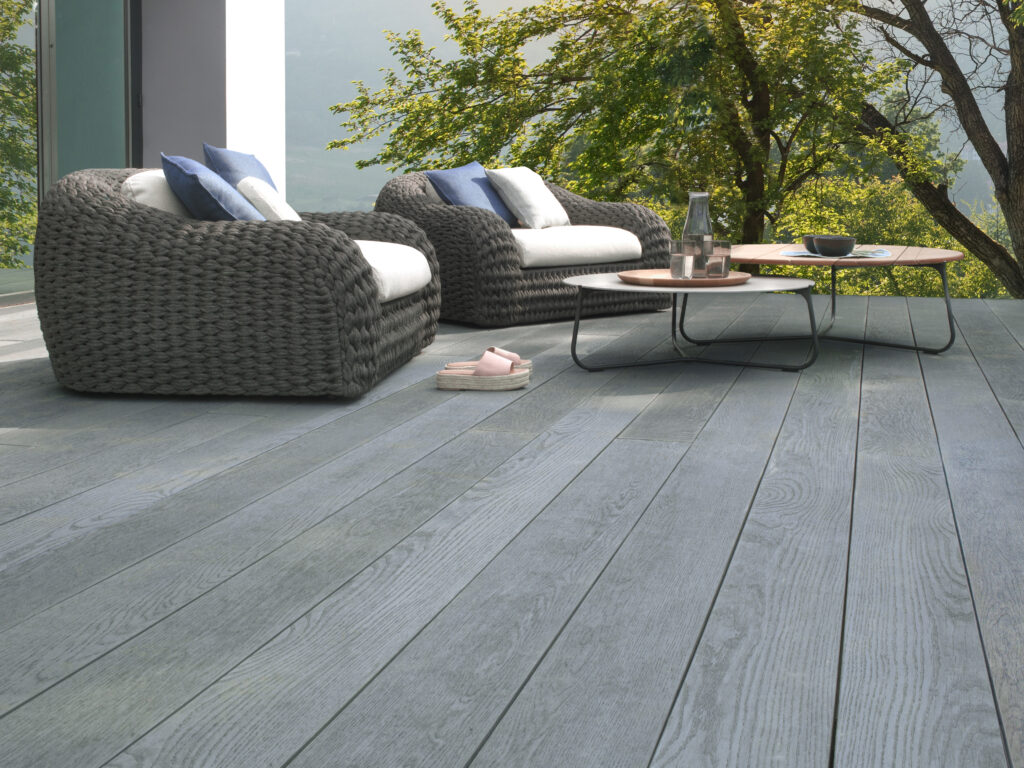
Composite decking like Millboard is always more expensive to buy than traditional timber decking. But you get so many fantastic advantages that overcome the biggest drawbacks of timber decking that the extra cost really makes sense.
Not only that, but when you consider the lifespan of the decking, that extra cost actually makes financial sense. Millboard decking requires virtually no maintenance, while wood needs to be treated and cleaned and repaired regularly throughout its lifespan. Particularly here in the UK, where the weather can never make up its mind and some of the disadvantages of timber decking are even more pronounced.
It is not rocket science to see that the advantages of composite decking like Millboard outweigh the negatives like that extra upfront cost. Any tradesperson involved in the installation of decking should be up on the comparisons between different types of decking, and it makes sense to recommend Millboard to clients.
Click here to login or register now and see our great trade offers on Millboard decking.
